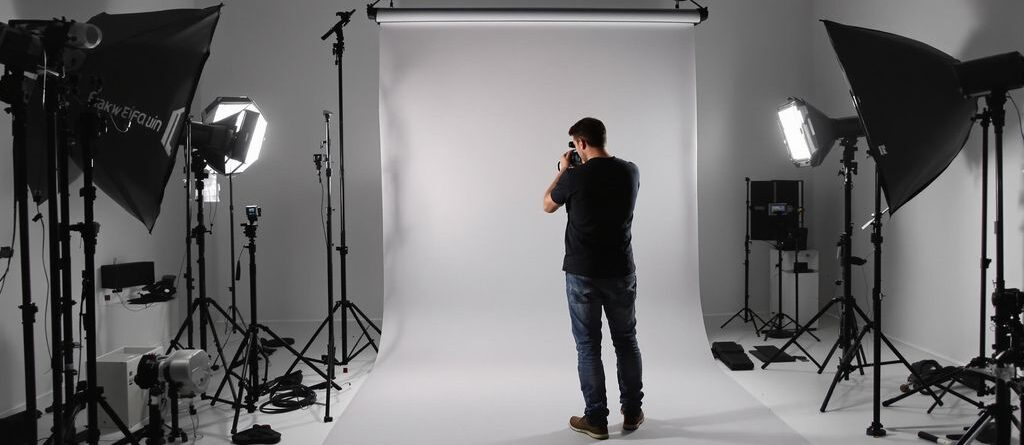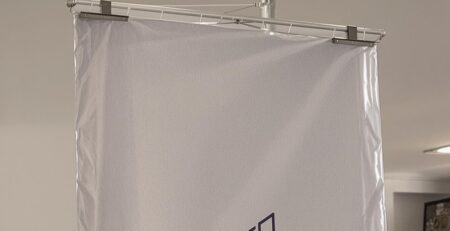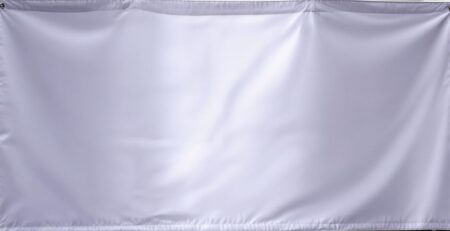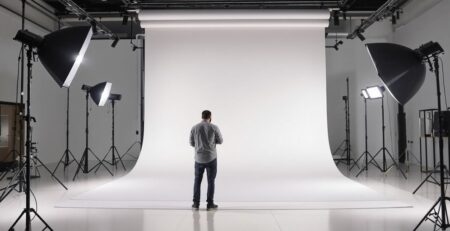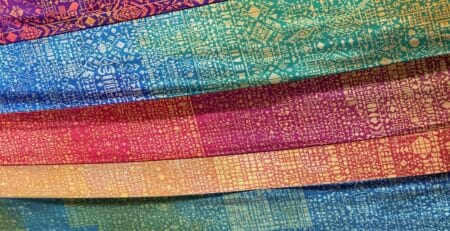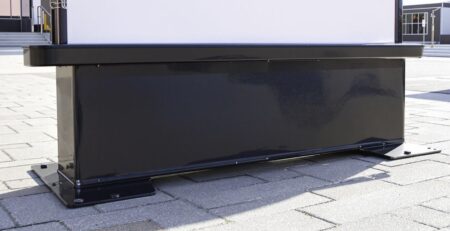Choosing the Best Adjustable Backdrop Stand for Your Photography Needs
Picking the right adjustable backdrop stand can feel like a big deal for photographers, whether you’re just starting out or you’ve been doing this for a while. There are so many choices, and each one has its own good points and not-so-good points. This guide is here to help you figure out what to look for, so you can pick the best stand for your photography needs and make sure your photos look great every time.
Key Takeaways
- Think about how much space you have and where you’ll be shooting. A small, portable adjustable backdrop stand is great for tight spots or on-location work.
- Always check the weight capacity. You want a stand that can easily hold your backdrops, even heavier ones, without wobbling or bending.
- Go for durable materials like aluminum or steel. These will last longer and handle the wear and tear of regular use.
- Look for stands that are easy to set up and take down. If you’re moving it around a lot, quick assembly is a huge plus.
- Consider if you need extra features, like adjustable height and width, or if you plan to hang other gear on it. Some stands are more versatile than others.
1. Emart 10 X 8ft Light Weight Banner Stand
The Emart 10 x 8ft Light Weight Banner Stand is a popular choice for photographers needing a portable and adjustable backdrop solution. Its lightweight design makes it easy to transport and set up, perfect for on-location shoots or events. It’s designed to support backdrops on all four sides, providing stability and preventing movement during photoshoots. This is especially useful when working with heavier fabrics or in environments where there might be slight disturbances.
Here’s a quick rundown of what makes this stand a contender:
- Adjustable size, offering versatility for different backdrop dimensions.
- Easy installation, typically taking only 5-10 minutes.
- Iron feet provide added stability.
While the Emart stand is a solid option, it’s important to consider the weight of your backdrop. Extremely heavy materials might require a more robust stand for optimal stability. Also, double-check the dimensions to ensure it fits your specific needs, as some users have noted slight discrepancies.
This stand is particularly well-suited for vinyl banners and fabric backdrops, making it a versatile addition to any photographer’s toolkit.
2. Kate Background Stand Equipment

Kate offers a range of background stands, and they’re pretty popular for a reason. They have options for different needs and budgets. Let’s take a closer look at what makes them stand out.
Kate stands are known for their ease of use and versatility.
One thing I appreciate about Kate is the variety. You can find stands that are great for small home studios or bigger setups for professional shoots. They also seem to focus on making their stands easy to assemble, which is a huge plus if you’re constantly setting up and tearing down your equipment. If you are looking for advertising flags, Kate has a lot of options.
Here’s a quick rundown of some things to consider:
- Material: Look for aluminum or steel. These are durable and can handle the weight of most backdrops.
- Adjustability: Make sure the height is adjustable to fit different shooting scenarios.
- Portability: If you’re shooting on location, a lightweight and easy-to-transport stand is a must.
I’ve used a Kate stand for a few years now, and it’s held up pretty well. The locking mechanisms are simple, and it’s relatively easy to adjust the height. The only downside is that the carrying case could be a bit more durable. Overall, it’s a solid choice for the price.
3. Folong Backdrop Stand
The Folong backdrop stand is another solid option for photographers looking for an adjustable and portable solution. It’s designed to be easy to store and transport, making it a good choice for on-location shoots or photographers with limited studio space. The expandable frame allows for adjustments in both height and width, providing flexibility for different backdrop sizes and shooting scenarios.
Here’s a quick rundown of what you can expect:
- Adjustable height and width: Adapts to various backdrop sizes.
- Easy to store and carry: Great for photographers on the go.
- Expandable frame: Offers flexibility for different shooting needs.
One thing to keep in mind is that some users have noted that the Folong stand can be a bit weak, so it might not be the best choice for very heavy backdrops or high-wind outdoor conditions. However, for most standard backdrops and indoor use, it should perform well.
While it might not be the absolute sturdiest option out there, the Folong backdrop stand offers a good balance of portability, adjustability, and affordability. If you’re looking for a reliable stand that won’t break the bank and is easy to take with you, the Folong is definitely worth considering. You can even use it with advertising flags for outdoor events.
4. MOUNTDOG Photo Studio Backdrop Stand
The MOUNTDOG Photo Studio Backdrop Stand is another popular option, especially for those just starting out. It’s designed to be relatively easy to set up, which is a big plus if you’re not super tech-savvy or just want to get shooting quickly. The adjustable height and width are useful for different types of shoots.
It’s made of aluminum alloy, which keeps it lightweight, but that also means it might not be the best choice for super heavy backdrops. It’s more suited for lighter fabrics or paper rolls. It comes with a carrying bag, making it easy to transport to different locations. If you’re looking for advertising flags to promote your photography business, consider checking out 99banners.com.
Here’s a quick rundown:
- Pros:
- Easy setup, great for beginners. This is a big selling point. No one wants to spend hours wrestling with equipment.
- Lightweight and portable. The carrying bag is a nice touch.
- Adjustable height and width.
- Cons:
- Not ideal for heavy backdrops. Keep this in mind if you plan on using heavier materials.
- Some users have noted that it could use more clamps to securely hold the backdrop in place.
Overall, the MOUNTDOG stand is a decent option for hobbyists or those who need a portable and easy-to-use backdrop solution. It might not be the most robust stand on the market, but it gets the job done for lighter-duty work. It’s a good balance of price and functionality, especially if you’re not planning on hanging anything too heavy.
5. C-Stand
C-stands are a staple in photography and film sets, known for their robust build and versatility. They’re often used to hold lights, reflectors, and, yes, backdrops. Unlike some of the lighter-duty options, C-stands are designed to handle heavier loads and withstand demanding conditions. They usually come as part of a kit, which includes a boom arm, clamps, and sandbags for added stability.
Here’s why you might choose a C-stand:
- Durability: Built to last, even with frequent use.
- Stability: The wide base and sandbag compatibility make them very stable, even with heavy backdrops.
- Versatility: Can be used for a variety of purposes beyond just holding backdrops.
C-stands are a great investment if you need a reliable and versatile stand that can handle a lot of weight. They might be overkill for very lightweight backdrops, but if you’re working with heavier materials or need to position your backdrop at an odd angle, a C-stand is the way to go. Just be aware that they can be quite heavy and bulky, so they’re not always the best choice for on-location shoots where portability is key.
While some C-stand models are designed to be portable, often using lightweight materials, others are too heavy to easily transport to different shooting locations. If you’re considering a C-stand, think about where you’ll primarily be using it. If you need something for on-location work, you might want to consider a lighter-weight option or a portable backdrop stand.
6. Portable Stand
Portable stands are all about convenience. They’re designed to be easy to move, set up, and take down, making them ideal for photographers who shoot in different locations. A key feature is their lightweight construction and the inclusion of a carrying case.
Think about it: lugging heavy equipment around is a pain. Portable stands solve that problem. They’re great for on-location shoots, events, or even just moving around your studio.
Here are some things to consider when looking at portable stands:
- Weight: How easy is it to carry? Look for stands made from aluminum alloy or other lightweight materials.
- Setup: How quickly can you set it up and take it down? Some stands have quick-lock systems that make setup a breeze.
- Adjustability: Can you adjust the height and width to fit different backdrops? This is important for versatility.
- Stability: Even though they’re lightweight, they still need to be stable. Consider stands with wider bases or the ability to add sandbags for extra stability. You can find retractable banners that are easy to transport.
Portable stands often come in kits with extra stuff like clamps and sandbags. These extras can be super helpful, especially if you’re shooting outdoors or in unpredictable conditions. Make sure to check what’s included before you buy.
There are different types of portable stands, including standard photo backdrop stands, arched stands, and even T-shape stands. The best choice depends on your specific needs and the types of backdrops you use.
7. Wall-Mounted System
Wall-mounted systems offer a permanent backdrop solution, ideal for studios where space is a premium. Instead of setting up and tearing down a stand every time, your backdrops are always ready to go. There are a few different types to consider, each with its own set of pros and cons.
One option is a manual wall-mounted system. These are pretty straightforward: you mount brackets to your wall, and then you manually raise and lower your backdrops. They’re a budget-friendly choice, especially for smaller studios or home setups. Another option is an electric roller system. These are a bit fancier, allowing you to control your backdrops with a remote. They can support multiple backdrops, making it easy to switch between different looks. Electric systems are great if you plan to shoot frequently and want a convenient setup.
Wall-mounted systems are a great way to save space and keep your studio organized. They offer a permanent solution for hanging backdrops, making them ideal for photographers who shoot regularly in the same location. However, installation can be a bit more involved than setting up a portable stand, so keep that in mind.
When choosing a wall-mounted system, think about the weight of your backdrops and the amount of space you have available. Also, consider whether you want a manual or electric system. If you’re looking for a simple and affordable option, a manual system might be the way to go. But if you want the convenience of remote control, an electric system is worth the investment. Don’t forget to check out church backdrop design ideas for inspiration!
8. Heavy Duty Backdrop Stand

A heavy duty backdrop stand is your go-to if you need something that can handle a lot of weight or will be used frequently. These stands are usually made with high-strength aluminum alloy or steel, so they’re built to last. They’re often designed for more permanent setups in a studio, but some are still light enough to be portable, even if the initial setup might take a bit more effort. I mean, nobody wants their backdrop collapsing mid-shoot, right?
Depending on the model, you might find that these stands have extra top bars or crossbars. This is super handy because you can have different backdrops ready to go, making it easy to switch things up quickly. Think of it like having a wardrobe for your photoshoots!
Here’s a quick rundown of what makes them stand out:
- Durability: Made from strong materials like steel or aluminum alloy.
- Stability: Designed to handle heavier backdrops without wobbling.
- Versatility: Some models can hold multiple backdrops at once.
I remember this one time I was shooting a group portrait, and we were using a flimsy backdrop stand. It started to lean halfway through, and everyone was scrambling to hold it up. It was a total mess! That’s when I realized the importance of investing in a good, heavy-duty stand. It’s worth the peace of mind, trust me.
These stands are great if you’re working with larger backdrops or if you just want something that’s going to last. They might cost a bit more upfront, but they’re a solid investment for any serious photographer.
9. Small Backdrop Stand
Sometimes, you just don’t need a huge setup. Maybe you’re shooting headshots, product photos, or working in a tight space. That’s where a small backdrop stand comes in handy. These stands are designed for portability and convenience, making them ideal for photographers on the go or those with limited studio space. They might not handle heavy fabrics or large rolls, but they excel at supporting smaller backdrops and creating a clean, focused look.
Think of these as your go-to option for quick and easy setups. They often come with lightweight frames and simple assembly, so you can spend less time wrestling with equipment and more time focusing on your shot. Plus, their compact size makes them easy to store when not in use.
I remember trying to set up a full-sized backdrop stand in my tiny apartment. It was a disaster! I kept bumping into things, and the whole thing felt like it was about to topple over. That’s when I realized I needed something smaller and more manageable. A small backdrop stand was the perfect solution for my limited space.
Here’s a quick look at some of the benefits of using a small backdrop stand:
- Easy to transport
- Quick to set up
- Ideal for small spaces
- Affordable
While they might not be suitable for every situation, small backdrop stands are a great addition to any photographer’s toolkit. They offer a practical and efficient way to create professional-looking photos without the hassle of larger, more cumbersome equipment. If you’re looking for custom banner printing services, you might also want to consider the size and portability of your backdrop stand to ensure it fits your needs.
10. Telescopic Backdrop Stand
Telescopic backdrop stands are all about adaptability. They’re designed to adjust to various widths and heights, making them super useful for different shooting scenarios. The main advantage is their ability to collapse down for easy transport and storage.
Think of them as the Swiss Army knife of backdrop stands. Need a small setup for headshots? No problem. Expanding for a group photo? They’ve got you covered. They usually consist of adjustable poles that slide into each other, allowing you to customize the size of your backdrop.
Here’s why you might consider one:
- Versatility: They work with a wide range of backdrop sizes.
- Portability: Easy to carry to different locations.
- Adjustability: Fine-tune the height and width to your exact needs.
One thing to keep in mind is that while they’re versatile, they might not be as rock-solid as some of the heavy-duty options. If you’re working with very heavy backdrops or in windy conditions, you might want to consider a sturdier stand. But for most indoor and light outdoor use, a telescopic stand is a great choice.
If you’re looking for custom banner printing services, you’ll want a stand that can handle the banner’s size and weight. Telescopic stands can often do the trick, but always check the weight capacity before you buy.
Looking for a great way to show off your banners? Our telescopic backdrop stands are super easy to set up and take down, making them perfect for any event. They’re strong and can hold different banner sizes, so you’ll always look professional. Want to see how simple it is to get yours? Check out our full selection and order today at 99banners.com!
Wrapping It Up: Picking Your Perfect Stand
So, there you have it. Choosing the right backdrop stand might seem like a small thing, but it really makes a difference for your photos. Think about what you need it for, how much space you have, and if you’ll be moving it around a lot. Don’t just grab the cheapest one you see; a little bit of thought now can save you headaches later. A good stand means less fuss during your shoots and more time focusing on getting those great shots. Happy shooting!
Frequently Asked Questions
What exactly is a backdrop stand, and why do I need one?
A backdrop stand is a must-have for any photographer or videographer. It gives you a clean, professional way to hang your photo backgrounds. You can use it in a studio, on location, or even for a photo booth. With so many choices out there, picking the right one can feel overwhelming.
How do I pick the right size backdrop stand?
When picking a stand, think about how big your backdrop is and how much space you have. You also need to make sure the stand is strong enough to hold your backdrop without falling over. If you plan to use heavy backdrops or hang other gear, check the stand’s weight limit. It needs to handle everything you put on it.
What materials should a good backdrop stand be made of?
It’s best to get a stand made from tough materials like aluminum or steel. These materials are strong enough to hold up your backdrop without bending or breaking. They’ll last a long time, even with a lot of use.
How important is it for a backdrop stand to be easy to use?
Look for a stand that’s easy to set up and take down, especially if you’ll be moving it often. Choose one with simple locking parts and height adjustments that are easy to use. This will save you a lot of time and frustration.
Can I hang other photography equipment on a backdrop stand?
Yes, many backdrop stands, especially stronger ones like C-stands, can also hold other photography gear. This includes lights, reflectors, and diffusers. This makes them very versatile tools for your shoots.
What’s the best way to take care of my backdrop stand?
To make your stand last, always use it as it’s meant to be used. Carry it in its case when you move it. Don’t overload it with too many backdrops or heavy gear. Clean it regularly with a mild soap and water solution, especially if it gets dusty or used outside. If it gets wet, dry it right away, taking it apart if needed to get moisture out of the tubes. Store it in a dry place that isn’t too humid.

